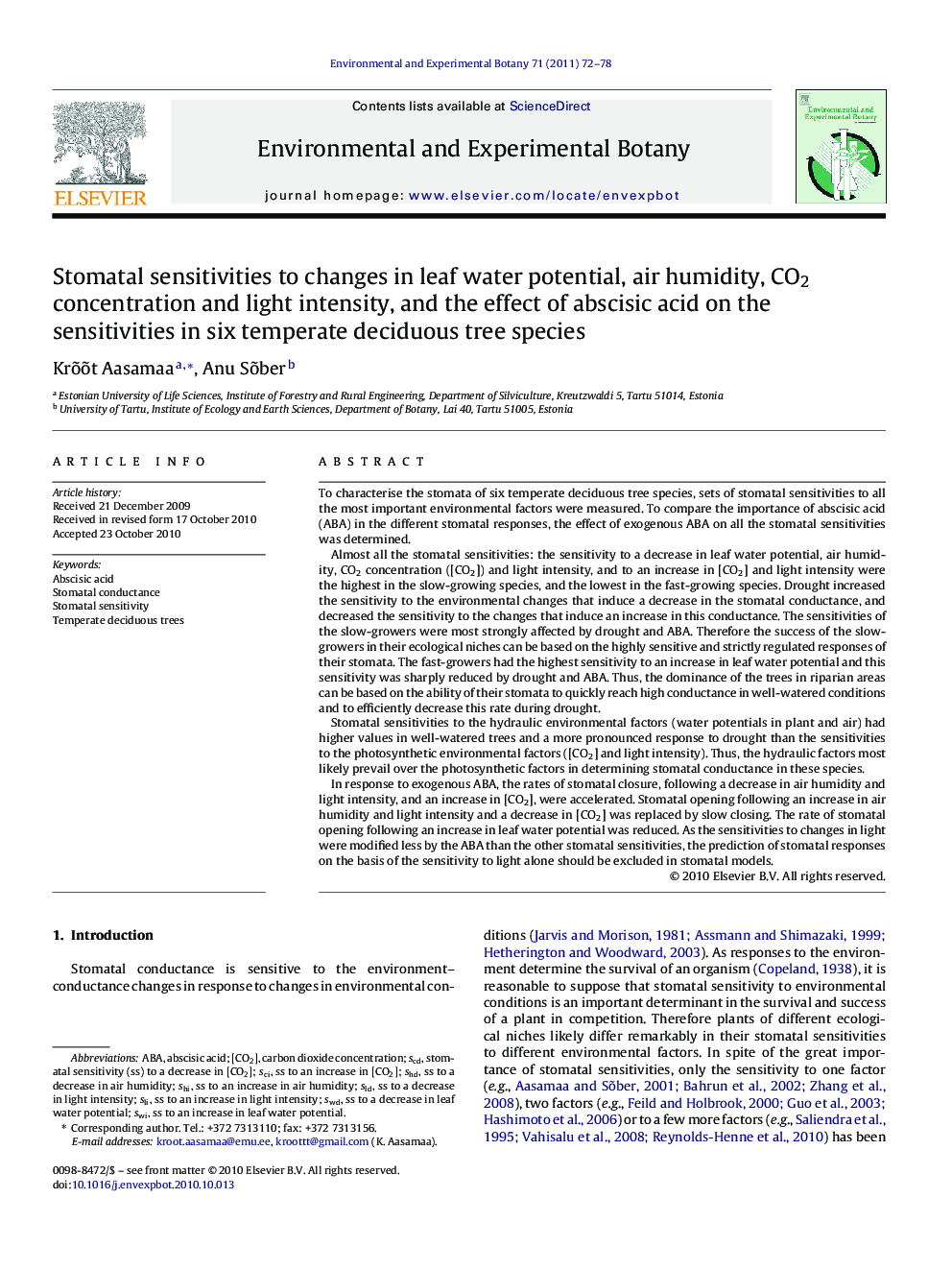| کد مقاله | کد نشریه | سال انتشار | مقاله انگلیسی | نسخه تمام متن |
|---|---|---|---|---|
| 6389026 | 1329224 | 2011 | 7 صفحه PDF | دانلود رایگان |

To characterise the stomata of six temperate deciduous tree species, sets of stomatal sensitivities to all the most important environmental factors were measured. To compare the importance of abscisic acid (ABA) in the different stomatal responses, the effect of exogenous ABA on all the stomatal sensitivities was determined.Almost all the stomatal sensitivities: the sensitivity to a decrease in leaf water potential, air humidity, CO2 concentration ([CO2]) and light intensity, and to an increase in [CO2] and light intensity were the highest in the slow-growing species, and the lowest in the fast-growing species. Drought increased the sensitivity to the environmental changes that induce a decrease in the stomatal conductance, and decreased the sensitivity to the changes that induce an increase in this conductance. The sensitivities of the slow-growers were most strongly affected by drought and ABA. Therefore the success of the slow-growers in their ecological niches can be based on the highly sensitive and strictly regulated responses of their stomata. The fast-growers had the highest sensitivity to an increase in leaf water potential and this sensitivity was sharply reduced by drought and ABA. Thus, the dominance of the trees in riparian areas can be based on the ability of their stomata to quickly reach high conductance in well-watered conditions and to efficiently decrease this rate during drought.Stomatal sensitivities to the hydraulic environmental factors (water potentials in plant and air) had higher values in well-watered trees and a more pronounced response to drought than the sensitivities to the photosynthetic environmental factors ([CO2] and light intensity). Thus, the hydraulic factors most likely prevail over the photosynthetic factors in determining stomatal conductance in these species.In response to exogenous ABA, the rates of stomatal closure, following a decrease in air humidity and light intensity, and an increase in [CO2], were accelerated. Stomatal opening following an increase in air humidity and light intensity and a decrease in [CO2] was replaced by slow closing. The rate of stomatal opening following an increase in leaf water potential was reduced. As the sensitivities to changes in light were modified less by the ABA than the other stomatal sensitivities, the prediction of stomatal responses on the basis of the sensitivity to light alone should be excluded in stomatal models.
Research highlightsⶠThe slow-growing temperate deciduous tree species are characterised by high stomatal sensitivities to changes in most environmental factors, big differences between the different stomatal sensitivities and a pronounced response of the sensitivities to drought and to exogenous ABA. ⶠThe fast-growing tree species have high stomatal sensitivity to only an increase in leaf water potential and large increase in the effect of ABA on this sensitivity during drought. ⶠThe stomatal sensitivities to changes in light intensity are affected less (than the other stomatal sensitivities) by the exogenous ABA.
Journal: Environmental and Experimental Botany - Volume 71, Issue 1, April 2011, Pages 72-78